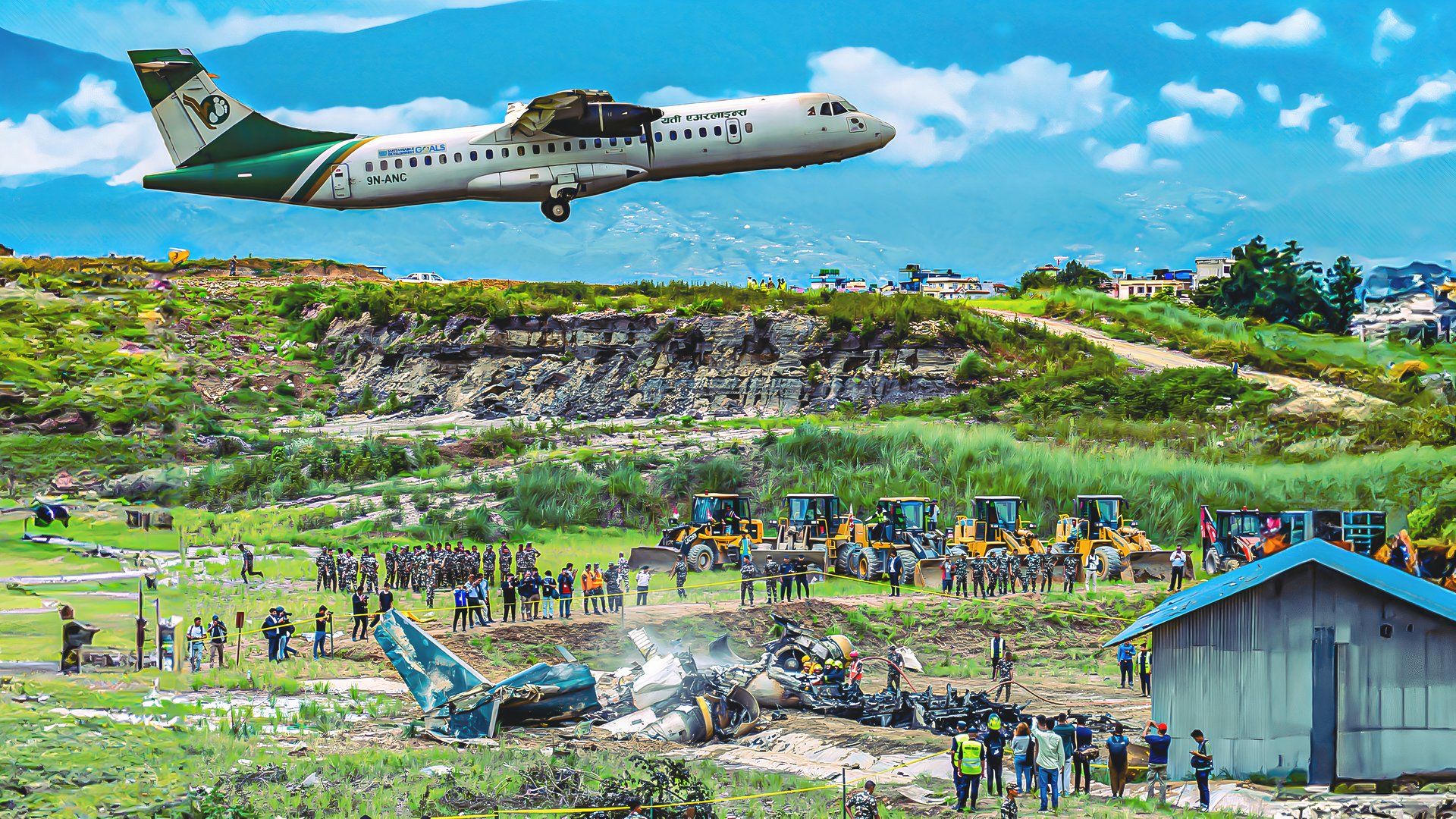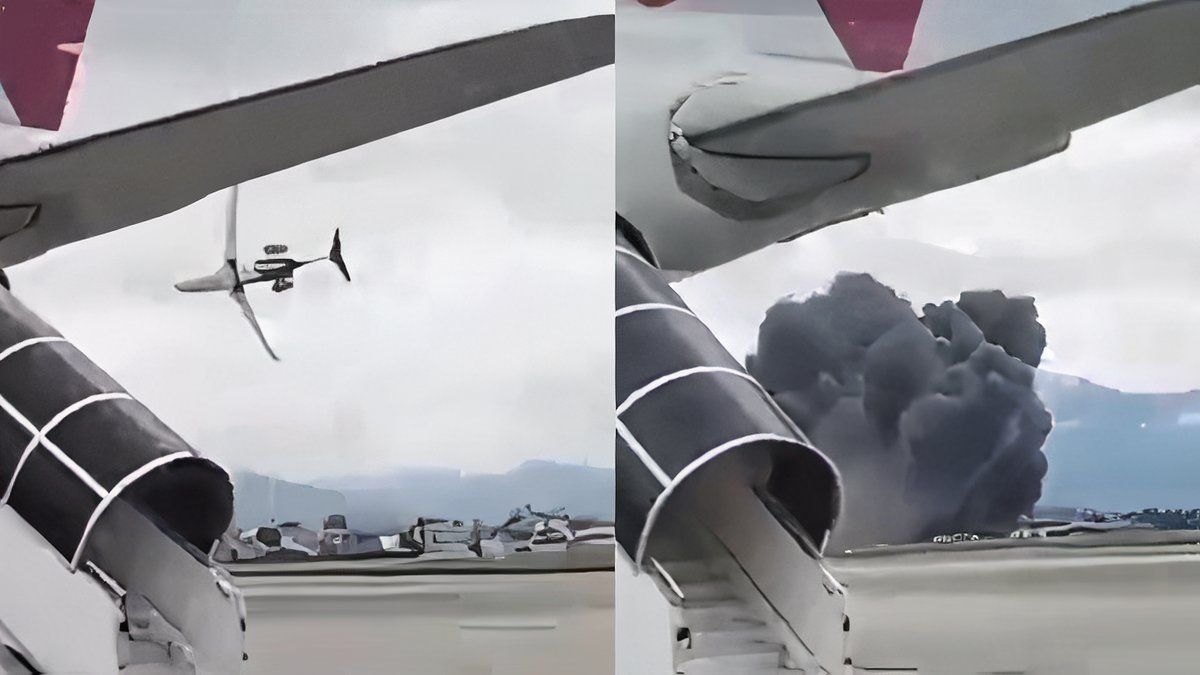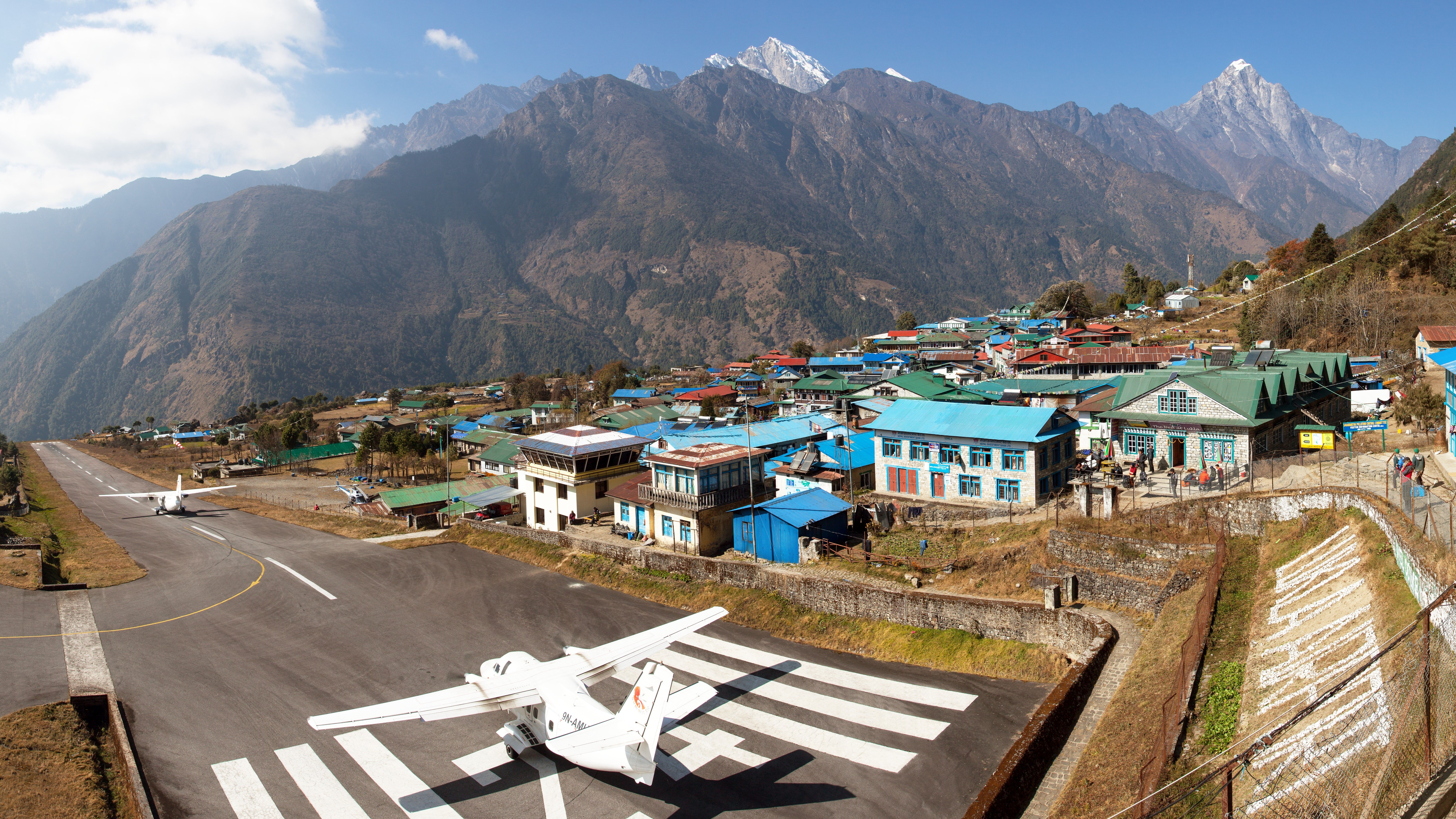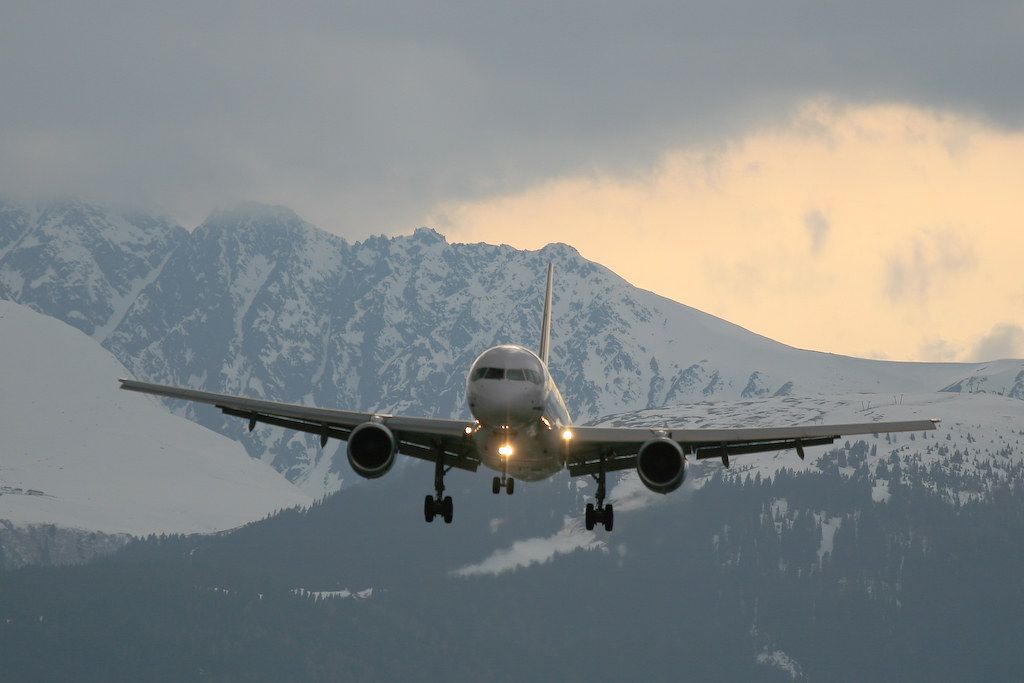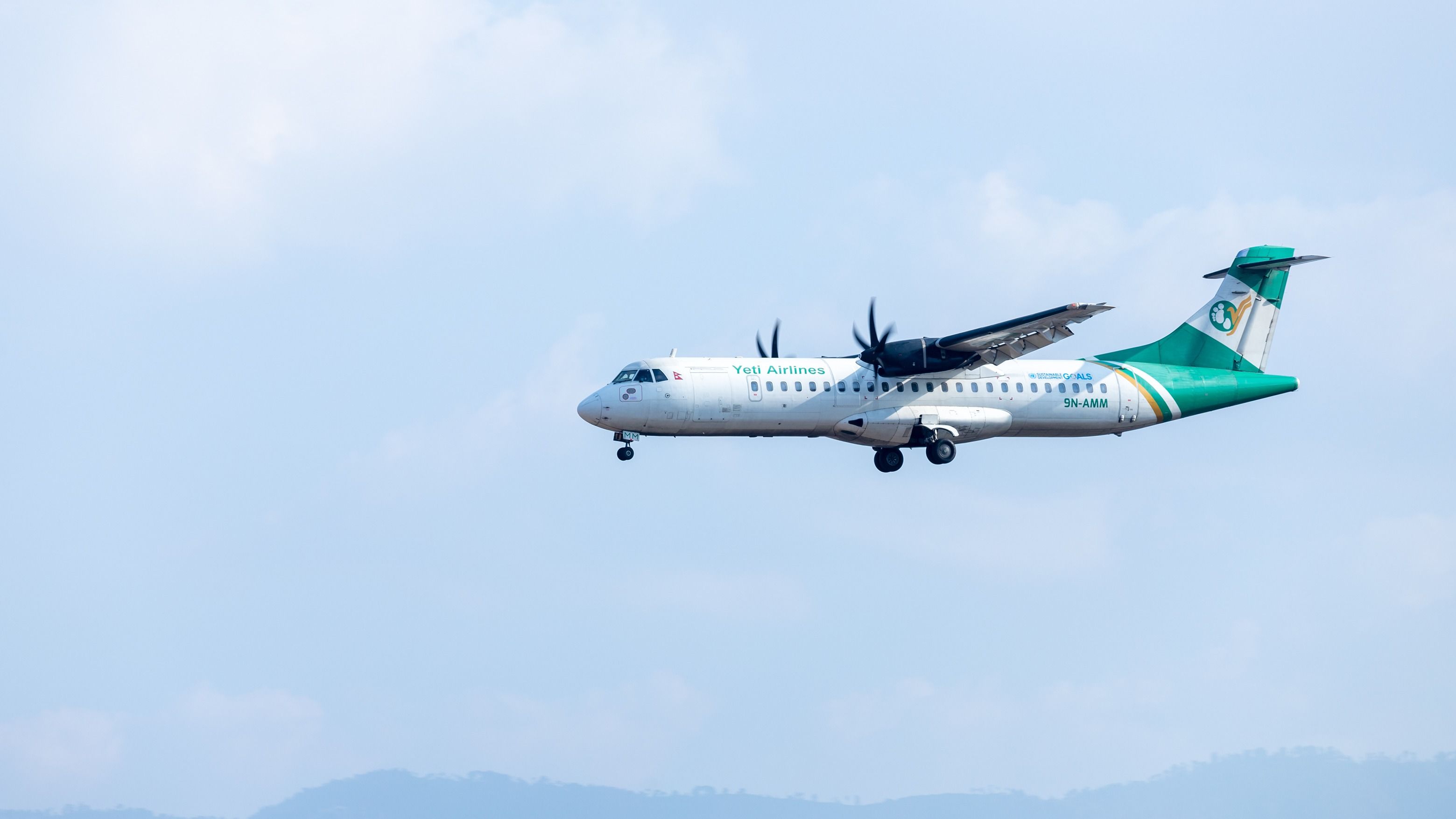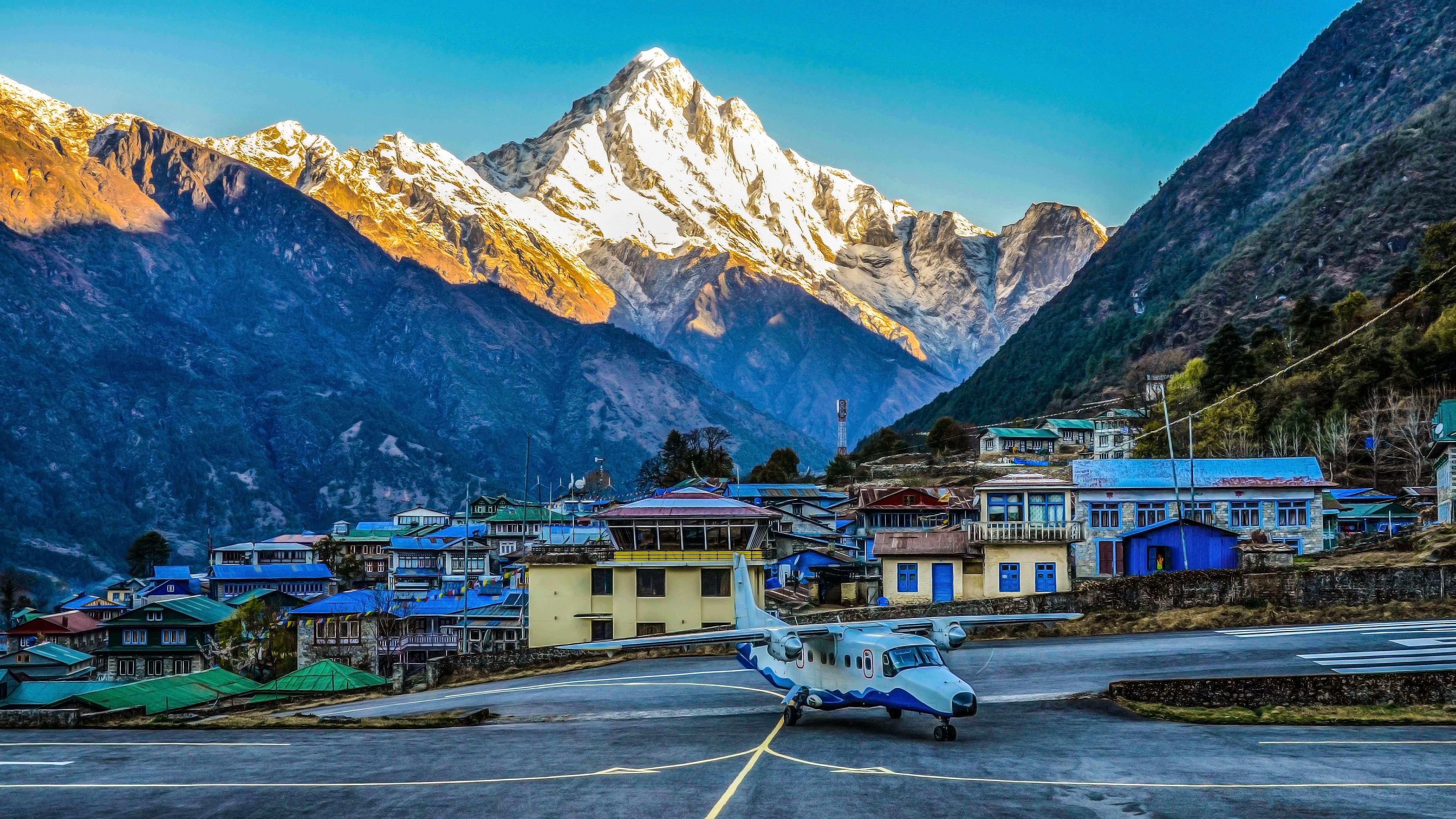Summary
- Nepal’s recent history of aviation disasters includes 14 major accidents with 5+ fatalities since 2010.
- Aviation challenges include mountainous terrain, short runways, aging fleets, and crew training issues which are contributing to accidents.
- But the biggest challenge is the conflict of interest within the civil aviation authority, which is hindering any improvements to safety.
Last week, the world witnessed with horror what has become an increasingly regular occurrence – an air accident in Nepal. A Bombardier CRJ-200 belonging to Kathmandu-based Saurya Airlines crashed moments after takeoff, killing 18 of the 19 passengers and crew onboard. The aircraft was carrying airline employees and headed to Pokhara to undergo C-checks, which poses the question: Why were so many people aboard an aircraft reportedly needing heavy maintenance?
Photo: Mashable
But this is far from the only such incident in Nepal. Just last year, a Yeti Airlines ATR 72 crashed on final approach to Pokhara, killing all 72 passengers and crew onboard in an incident that was widely publicized after videos from the ground and even onboard live streams from Facebook emerged. It was later determined that the pilots didn’t follow the standard landing checklist, inadvertently feathering the turboprops (thereby reducing thrust to zero) while trying to set flaps.
Examining the Nepalese safety record
These two incidents are merely the most recent examples of a long history of aviation disasters in the tiny Himalayan kingdom. There have been 14 accidents in 14 years with five or more fatalities. When you add in the more minor incidents (small aircraft, helicopters, etc.), Nepal has experienced nearly 40 accidents with more than 400 fatalities since 2010.
| Commercial aviation accidents in Nepal since 2010 (5+ fatalities) | ||||
|---|---|---|---|---|
| Date | Aircraft | Airline | Fatalities | Incident |
| Aug 2010 | Dornier DO228 | Agni Air | 14 | Spatial disorientation during bad weather |
| Dec 2010 | DHC-6 Twin Otter | Tara Airlines | 22 | Impacted terrain on the descent |
| Sep 2011 | Beechcraft 1900D | Buddha Air | 19 | Impacted terrain on final approach |
| Oct 2011 | Britten-Normal Islander | Royal Nepalese Air Force | 6 | Crashed after loss of spatial awareness |
| May 2012 | Dornier DO228 | Agni Air | 15 | Impacted terrain on final approach |
| Sep 2012 | Dornier DO228 | Sita Air | 19 | Stalled after takeoff due to insufficient airspeed |
| Feb 2014 | DHC-6 Twin Otter | Nepal Airlines | 18 | Crashed after a lack of crew coordination |
| Feb 2016 | PAC 750XL | Air Kashtamandap | 5 | Emergency landing after engine failure |
| Feb 2016 | DHC-6 Twin Otter | Tara Air | 23 | Impacted mountainside after ignoring warnings |
| May 2017 | Let L-410 | Summit Air | 5 | Hit trees short of the runway and crashed |
| Mar 2018 | Bombardier Q400 | US-Bangla Airlines | 51 | Crashed upon landing and burst into flames |
| May 2022 | DHC-6 Twin Otter | Tara Air | 22 | Controlled flight into terrain |
| Jan 2023 | ATR 72 | Yeti Air | 72 | Stalled and crashed while on final approach |
| Jul 2024 | CRJ-200 | Saurya Airlines | 18 | Crashed 20 seconds after takeoff |
Photo: Daniel Prudek | Shutterstock
Due to this litany of accidents, Nepal is one of 16 countries on the EU Air Safety list, which bans all airlines from that country from operating in the EU. This is primarily due to serious concerns about the regulation and oversight of aviation services in the country. But is this the only issue, or are there other factors that lead to Nepal’s checkered safety record?
Safety challenges in Nepal
Nepal has several factors that make it an extremely challenging country to fly in and contribute to the higher accident rates:
Mountainous terrain
Tucked into the Himalayas, aircraft in Nepal service small airports nestled in remote hills or near peaks blanketed in clouds. Not only does this create physical obstructions, but the terrain also creates sudden weather changes that impact wind speeds and intensity. In a 2023 safety report, the Civil Aviation Authority of Nepal (CAAN) said that a collision with terrain or another obstacle was the leading risk for aircraft, accounting for 93% of deaths in air accidents in the prior decade.
Photo: Deutsche Aircraft
Short/tabletop runways
Nepal has minimal flat terrain, so runways are often short or created as ‘tabletop runways’ by excavating peaks to create a flat surface. This makes takeoffs and landings more challenging and also increases the risks if something goes wrong. With sheer drops at one or both ends, an aircraft overshooting a runway or coming down short on approach faces a far higher likelihood of fatalities than on flat terrain.

Related
Lukla: 5 Fast Facts About The World’s Most Dangerous Airport
With Sir Edmund Hillary having to buy land to construct an airport in Nepal and an accident-ridden history, Lukla Airport is one of a kind.
Aging fleets
As one of the world’s poorer countries, Nepal and its airlines have not invested sufficiently in upgrading or maintaining their aircraft. Many of the aircraft are aging, and with a lack of adequate funding or technical expertise, tend to be poorly maintained. The country also lacks the infrastructure that is commonplace in most countries for aircraft maintenance. These factors combine to make accidents more likely, as was likely the case with the most recent incident.
Crew management and training
Numerous aviation experts have called for better training for pilots in Nepal, as many accidents have been caused or compounded by poor decision-making. The Yeti Airlines crash in 2023 was a prime example, with the pilots not following standard operating procedures for landing, and making the glaring error of feathering the engines and cutting power when in fact they were trying to set the flaps. In numerous other instances, pilot errors have compounded difficult circumstances due to terrain or weather, contributing to bringing the aircraft down.
Photo: Rojen’s Collection | Shutterstock
Change starts at the top
However, Nepal’s real problem is with the regulation and oversight of aviation services. In nearly all countries, aviation services and regulations are handled by separate agencies. But in Nepal, CAAN does both, regulating the airlines and managing the airports and associated services. This creates a conflict of interest, as the regulator polices its own operations, and officials that provide lucrative aviation services are the same ones who regulate them. This opens up the system for corruption and mismanagement.
Photo: Vojtech Flidr | Shutterstock
What makes matters worse is that the regulatory side of CAAN is underfunded and understaffed, with just 8% of the agency’s personnel allocated to it. The focus is clearly on the more lucrative operations. The International Civil Aviation Organization has requested the Nepali government to split up CAAN. It points to Nepal’s post-accident investigations scoring abysmally, meeting just a quarter of international norms. The European Union has also cited this conflict of interest in its blacklisting of Nepali airlines.
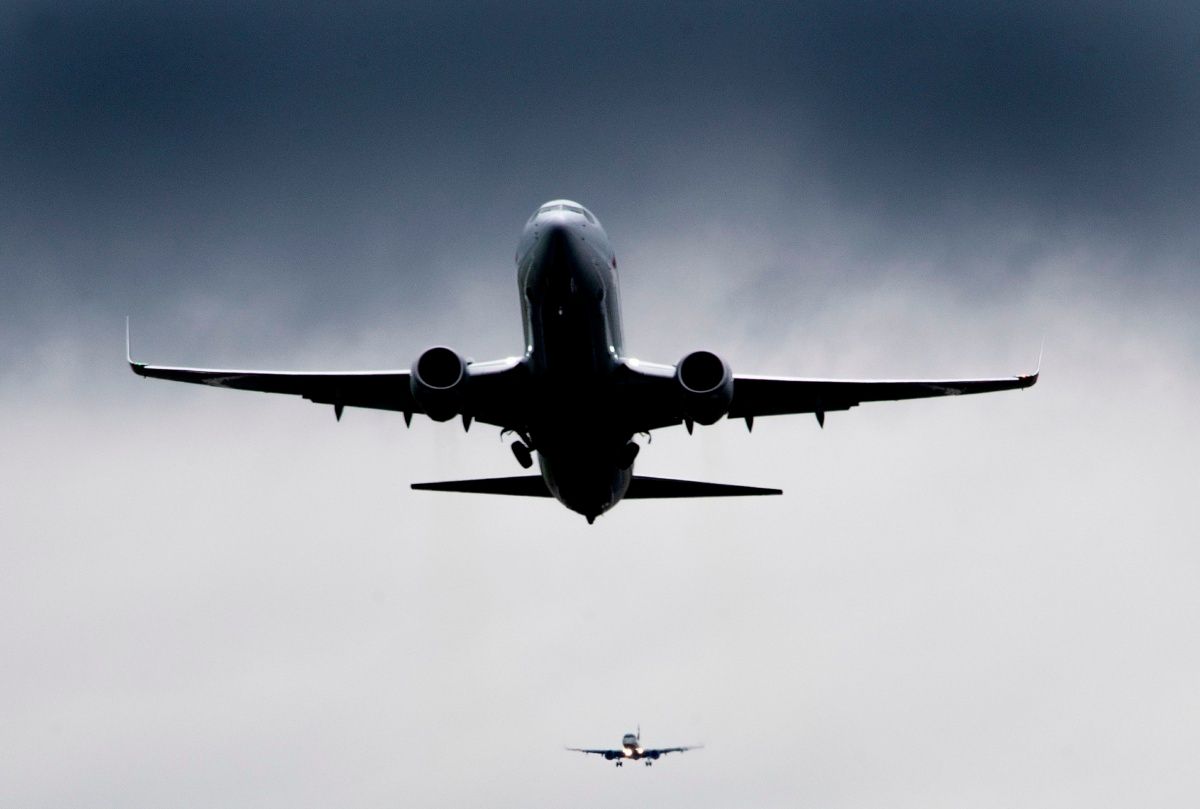
Related
What Is The International Civil Aviation Organization (ICAO)?
Thus far, the Nepalese government has been resistant to change. While pointing to some improvements in oversight functions, it still admits to ongoing weaknesses and resource issues. This remains a very troubling issue in a country that already faces numerous challenges to its commercial aviation sector. One has to wonder how many more fatal accidents will occur before Nepal entrusts aviation regulation to a genuinely independent body.
